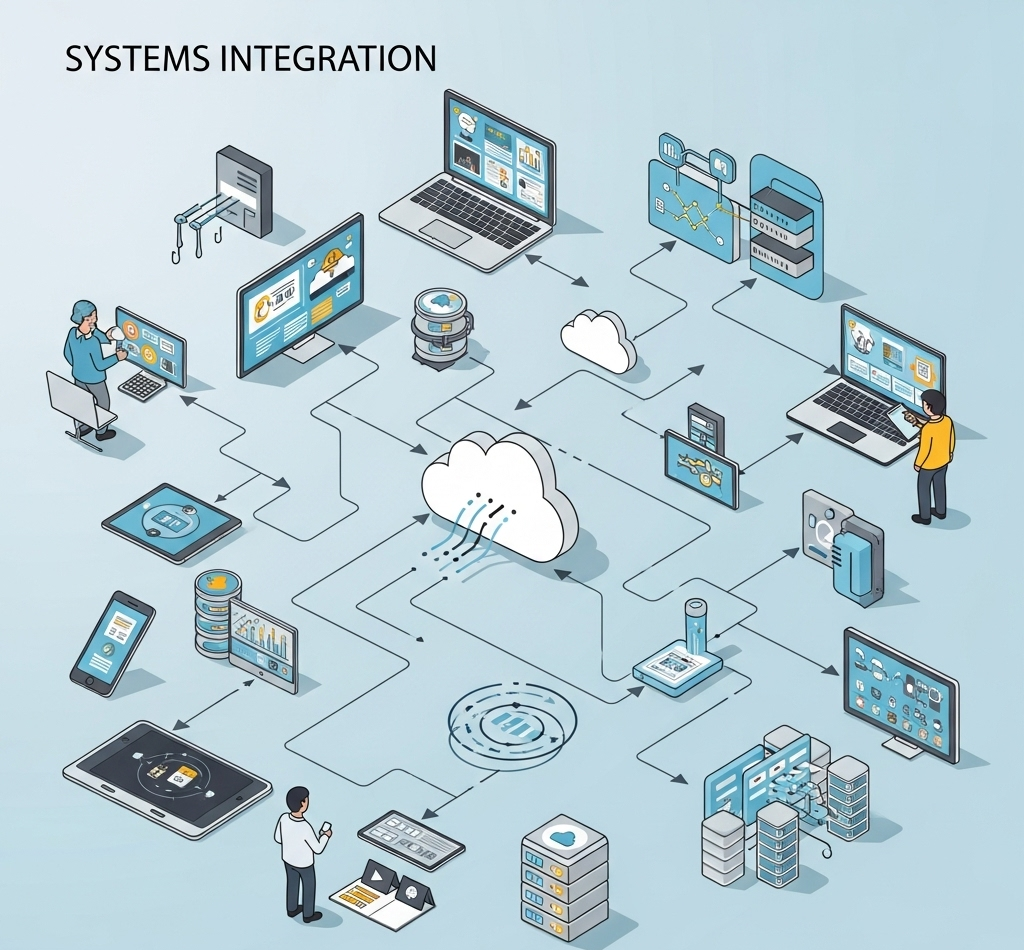
Seamless integration of procurement tools with Product Lifecycle Management (PLM), Enterprise Resource Planning (ERP), and Service Management Systems is critical for operational efficiency and competitive advantage. This blog post explores the benefits, challenges, and best practices for integrating these systems to streamline processes and enhance collaboration across departments.
Procurement is no longer an isolated function; it’s a strategic component that intersects with product development, resource planning, and customer service. Integrating procurement tools with PLM, ERP, and Service Management Systems creates a unified ecosystem that drives efficiency and innovation. Here’s why it matters:
Improved Data Flow: Integration ensures real-time data sharing, reducing manual data entry and errors. For example, PLM systems provide product specifications that procurement teams use to source components, while ERP systems track inventory and financials.
Enhanced Collaboration: Cross-functional teams—engineering, procurement, and service—can collaborate effectively when systems are interconnected, aligning goals and timelines.
Cost Optimization: By linking procurement with ERP, businesses can better manage supplier contracts, monitor spending, and optimize inventory levels, reducing costs.
Faster Time-to-Market: Integrating PLM with procurement accelerates sourcing decisions by providing early visibility into material requirements, streamlining product development.
Better Service Delivery: Service Management Systems benefit from procurement integration by ensuring spare parts availability, improving customer satisfaction.
To understand integration, let’s break down the roles of each system:
PLM (Product Lifecycle Management): Manages the entire lifecycle of a product, from design to retirement. It provides procurement teams with bills of materials (BOMs), specifications, and revision data.
ERP (Enterprise Resource Planning): Centralizes business processes like inventory management, financials, and supply chain operations. It informs procurement about stock levels, budgets, and supplier performance.
Service Management Systems: Handle after-sales service, including maintenance, repairs, and spare parts management. They rely on procurement for timely component availability.
Procurement Tools: Facilitate supplier selection, purchase orders, contract management, and spend analysis. These tools act as the bridge between PLM, ERP, and service needs.
While the benefits are clear, integration comes with challenges:
Data Silos: Legacy systems or incompatible platforms can hinder data flow, requiring middleware or custom APIs.
Complexity: Aligning processes across departments with different priorities (e.g., engineering vs. finance) can be complex.
Cost and Time: Integration projects often require significant investment in software, training, and change management.
Security and Compliance: Sharing sensitive data (e.g., supplier contracts, product designs) across systems demands robust cybersecurity measures.
To overcome challenges and maximize value, consider these best practices:
Define Clear Objectives:
Align integration goals with business needs, such as reducing procurement cycle times or improving supplier collaboration.
Involve stakeholders from procurement, engineering, finance, and service teams to ensure buy-in.
Choose the Right Technology:
Opt for cloud-based platforms with open APIs to facilitate integration. For example, modern PLM tools like Siemens Teamcenter or PTC Windchill offer robust integration capabilities.
Use middleware like MuleSoft or SAP Integration Suite to connect disparate systems if direct integration isn’t feasible.
Standardize Data Formats:
Establish common data standards (e.g., for BOMs, part numbers, or supplier IDs) to ensure consistency across systems.
Implement a master data management (MDM) strategy to maintain data integrity.
Map Processes End-to-End:
Document workflows to identify touchpoints between systems. For instance, map how a BOM from PLM triggers a purchase order in the procurement tool and updates inventory in ERP.
Automate repetitive tasks, like purchase order approvals, to save time.
Test and Iterate:
Conduct pilot integrations to test data flows and system performance before full-scale deployment.
Gather feedback from users to refine processes and address pain points.
Prioritize Security:
Use encryption and role-based access controls to protect sensitive data.
Ensure compliance with regulations like GDPR or ITAR when sharing data across systems.
Integrating procurement tools with PLM, ERP, and Service Management Systems is a game-changer for businesses aiming to optimize operations and stay competitive. While challenges like data silos and complexity exist, a strategic approach—backed by clear objectives, the right technology, and robust processes—can deliver significant returns. By fostering collaboration and enabling data-driven decisions, integration empowers organizations to innovate faster, reduce costs, and enhance customer satisfaction.
© 2025 Lasso Supply Chain Software LLC
Get instant access to our report on the Top Procurement Trends of 2025 by filling out the form below.

Get instant access to our report on the Top Procurement Trends of 2025.